In the diagram below, there is a large square made of 21 squares, each of a different size. If the dimensions of the three smallest squares in the figure are 2x2, 4x4, and 6x6, can you determine the dimensions of all the other squares, including the one that contains the 21 smaller squares?
You must show your algebra to get credit!
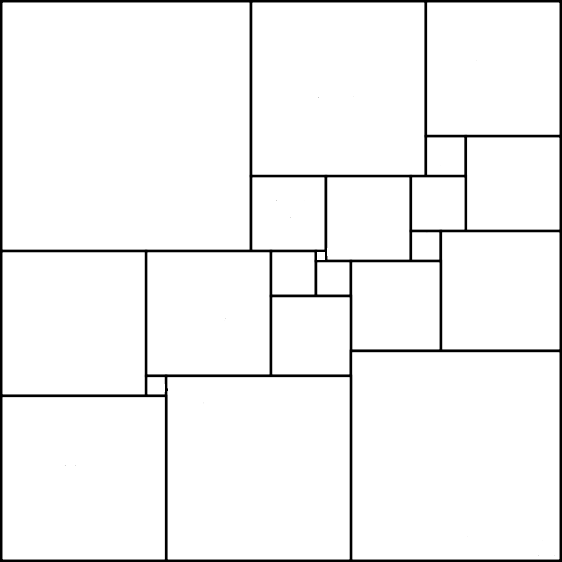
Click here for a printer version of this puzzle
Click here for a hint
Solution to the Problem:
The dimensions of the squares are 2x2, 4x4, 6x6, 7x7, 8x8, 9x9, 11x11, 15x15, 16x16, 17x17, 18x18, 19x19, 24x24, 25x25, 27x27, 29x29, 33x33, 35x35, 37x37, 42x42, and 50x50. The large square containing these 21 squares has dimensions 112x112.To solve, let x = the length of the segment in the diagram below. Then represent the lengths of other segments in the diagram in terms of x.
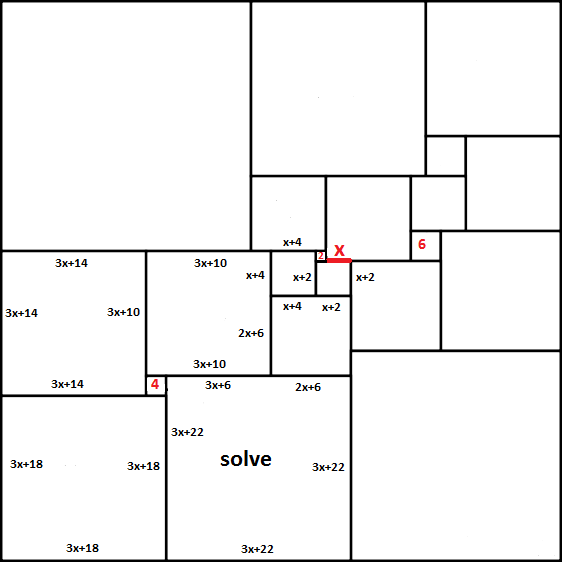
Now you will have filled in the squares whose sides are 2, 4, 6, 7, 9, 16, 25, 29, 33, and 37.
Let y equal the length of the segment shown in the diagram below and represent the sides in terms of y.
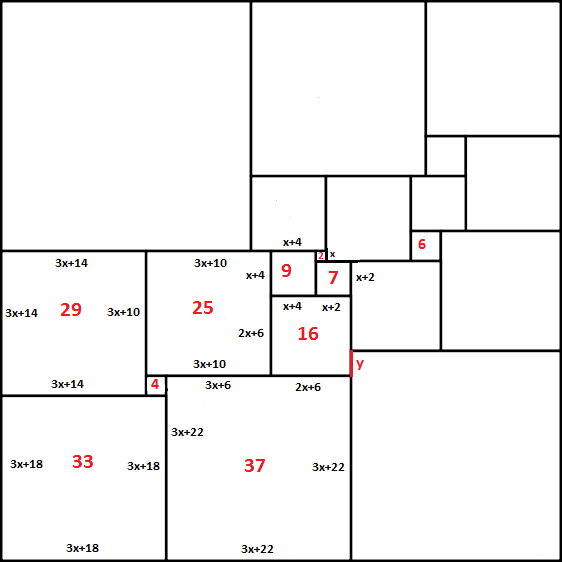
Again, you will be able to solve for y after filling in the sides in the diagram below.
You can determine that the sum of the lengths of the two sides on the bottom right side of the figure is 66 by adding 29 + 33 + 6 - 2.
Then set (29-y) + (52-2y) = 66 to get y = 5.
Now substitute 5 for y in each of the expressions.
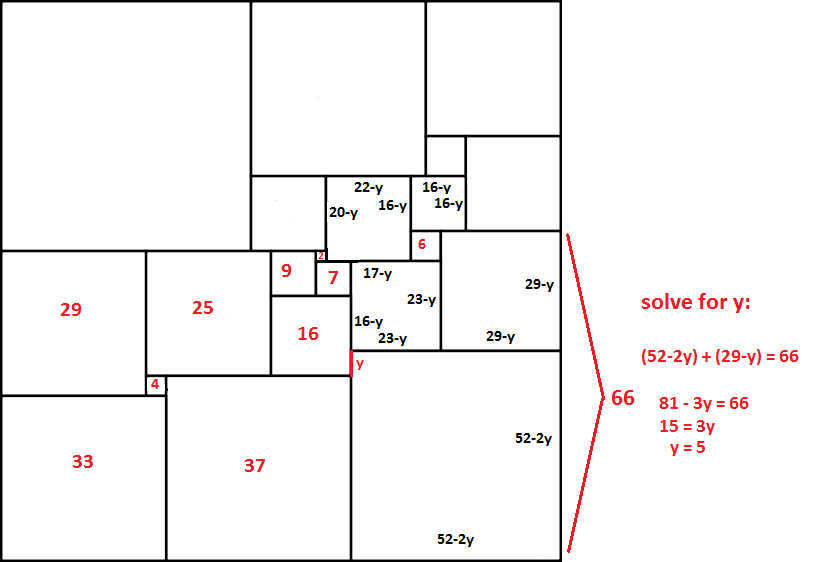
Now, just complete the remaining sides by addition or subtraction, like 24 + 6 - 11 to get 19.
Then 19 - 11 to get 8, 8 + 19 to get 27, and so on.
Here is the complete solution.
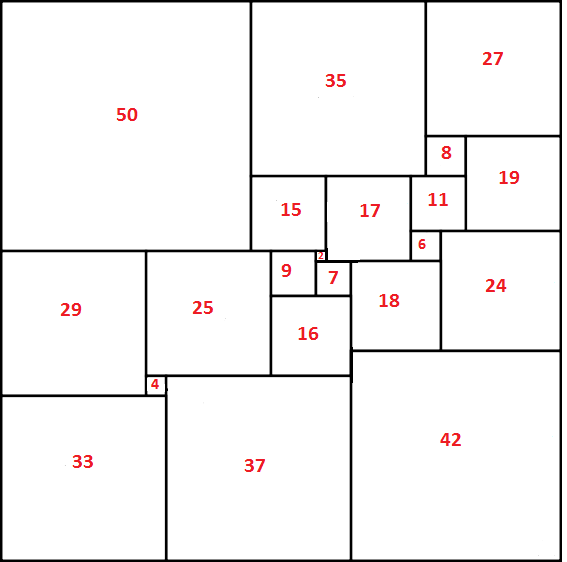
This is an example of a perfect squared square which consists of squares each of different sizes.
For a long time it was thought that perfect squared squares didn't exist, but they do.
This is the smallest one.
Correctly solved by:
| 1. Chelsey M. | John F Kennedy High School, Taylor, Michigan |
| 2. Gabe Gardiner |
Mountain View High School, Mountain View, Wyoming |
| 3. Danilo Calcinaro |
Istituto Tecnico Tecnologico (ITT) "Montani", Fermo, Italy |